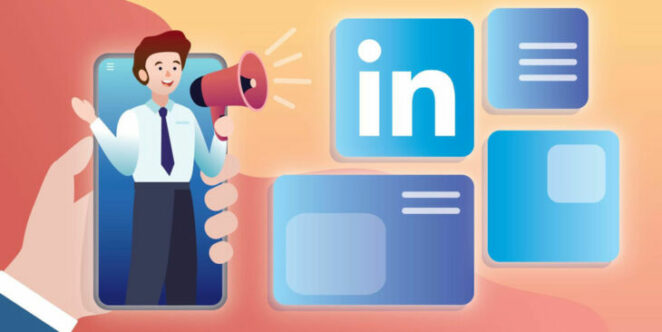

Over the years, we’ve seen endless organic advertisements spread across different social media platforms and websites. There’s no denying that it’s still as effective today, especially if paired with the right content and target market. The authenticity that comes from native ads makes it more valuable for users, and around 53% of consumers are more likely to pay attention to native ads over paid ads.
Being the biggest professional network, we expected nothing less from LinkedIn than for them to find a way to combine native ads with their powerful targeting tools. Through LinkedIn Sponsored Content, business leaders can now create campaigns aimed at a specific audience to push for quality leads.
Contents
What is LinkedIn Sponsored Content?
Sponsored Content is an update that allows a marketer to distribute LinkedIn content to a targeted audience outside of their LinkedIn network, visitors, and followers. Unlike your regular post, LinkedIn Sponsored Content is extremely flexible. You can choose to publish it on your newsfeed, send it through InMail, place in on the notifications page, or include it in the connections page.
Because of its highly modifiable features, it takes quite some time to choose the right set of everything. For a successful boost, marketers must be patient and precise in testing, managing, and experimenting on LinkedIn content.
Sponsored vs Direct Sponsored
Direct Sponsored Content is a different type of ad. This type of content allows the user to share content on their homepage without first publishing it on the company page or showcase page.
For most marketers, Direct Sponsored Content helps personalize and test out different types of LinkedIn content before having it permanently displayed on their company page.
A few straightforward tips
Nothing can beat timing and quality content, but there are simple tips that you can easily apply to your next LinkedIn Sponsored Content.
1. Specify your goals
Most of the time, content comes before your business goal. However, results are more achieved when you work your way backwards. Your LinkedIn content should be a bridge to reach your goals, and your end goal should be considered in every aspect of your Linkedin Sponsored Content.
Before crafting your content marketing strategy, specify the business goals you want to reach. If you’re looking for website visits, your content might be a link to a specific website. If you need more engagement, your content might be a call-to-action type of graphic.
A quick tip: Always choose measurable goals, so you can analyze and check if your content is working for you.
2. Share what you know
Unlike Facebook or Instagram, where users open the app to kill time, LinkedIn professionals aren’t on the site simply because they have a few minutes to spare. People come to LinkedIn for tools and insights that could help them succeed in their field. Whenever you’re creating your LinkedIn content, it’s ideal to prioritize useful pieces that your LinkedIn network and audience can apply in their careers.
Apart from inspiring conversations, sharing your knowledge can establish your credibility and build trust within (and outside) your LinkedIn network.
3. Make it mobile-friendly
A lot of us forget that not all users open LinkedIn on their laptops or the app. And this is a commonly neglected aspect of creating LinkedIn Sponsored Content. When an ad isn’t optimized for mobile, it can lead to slow-loading desktop designs that look messy.
If you want to maximize your content and convert your visitors, strive to you’re your Sponsored Content friendly for every possible platform. It may take up quite a bit more effort, but it will affect your analytics to a great extent.
4. Create an A/B Testing Strategy
Your target market is everything. If you can’t pinpoint your audience from the get-go, your Sponsored Content is bound to flop. As such, you must understand your market enough to know what they want to see. One way to do that is through A/B Testing your LinkedIn ad.
With A/B testing, marketers set up two campaigns the exact same way, except for the target audience selected. If you’re unsure if your content performs better for entry-level workers or executives, you can set up a LinkedIn Sponsored Content that differs in job level filters.
It may be time and budget-consuming, but it’s an excellent way to gain insights about your audience. Later on, this analysis will be useful for your long-term content marketing strategy.
On the industry’s best practices
Watch your word count
Ideally, headlines and descriptive copies should have a maximum character count to drive engagement. Avoid overwhelming your readers by keeping your text as minimal as possible, but with impact. Headlines should be kept under 150 characters, while copies must not go over 70 characters.
Image sizing matters
Larger images can get you up to a 38-per cent click-through-rate increase. Instead of using standard thumbnails, set your image sizes to the recommended size: 1200 x 627 pixels. If you’re looking for a detailed guide for your ad creation, LinkedIn has a page dedicated to Sponsored Content ad specs.
Boosting your lead generation
If your goal for running a campaign is to generate more leads, Lead Gen Forms might be a helpful addition to your LinkedIn Sponsored Content. With a single click of a button, Lead Gen Forms can collect user’s data once they choose to sign up, so they don’t need to go off-site.
Having an easy, one-step signup form reduces the risk of your leads clicking off the tab. It can even give a 2x increase in conversion rates, as shown in a recent marketing experiment from IR, a performance management software company from Australia.
